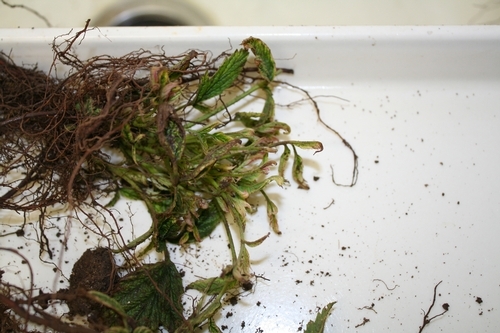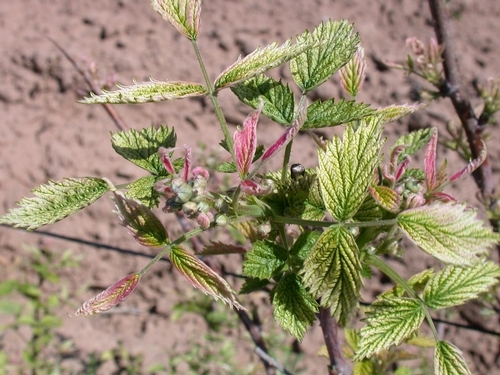This is a repost (with permission) of an article by Mark Bolda (UCCE Santa Cruz Co) from April 27, 2012. The original post and the Strawberry and Caneberry blog can be found at: http://ucanr.org/blogs/blogcore/postdetail.cfm?postnum=7362
Brad
by Mark Bolda:
This comes up a couple of times every year so it is worth reviewing and certainly adds value to our catalogue of plant disorders on these berry blogs.
The following plant sample of a proprietary variety was received 4/24/2012. One can see immediately that the leaves are chlorotic and burnt at the margins and in some cases (photo 2 below) newer leaves are somewhat deformed as well. Most often one will encounter a pink tint to many of the leaves.
The situation in the field was as follows, a mixture of Round Up (glyphosate) and Shark (carfentrazone) was applied to the field to control weeds one month prior to planting. According to weed scientist Steve Fennimore, the Shark does not linger in the soil for any significant period of time, actually around three hours tops. On the other hand, Round Up can linger for a while, maybe even longer than a month especially in a sandy soil in which it is not adsorbed to fine soil particles as it would in a clay.
The solution to this predicament, and indeed in all cases of Round Up toxicity, is to let the plant grow out of it. Raspberries have substantial stores of carbohydrates to draw on and can usually overcome the temporary inhibition of photosynthesis caused by mild herbicide damage such as the case presented here.
There are several herbicides mentioned in this article. Before using any herbicides, check with your local Agricultural Commissioner's Office and consult product labels for current status of product registration, restrictions, and use information.
Glyphosate damage to young raspberry plant.
Glyphosate damage to very young leaves. Note pink cast to entire affected area.
Classic Round Up damage on raspberry. In this case, taking place several years ago, the tank was not properly rinsed prior to application and the whole field looked like this.